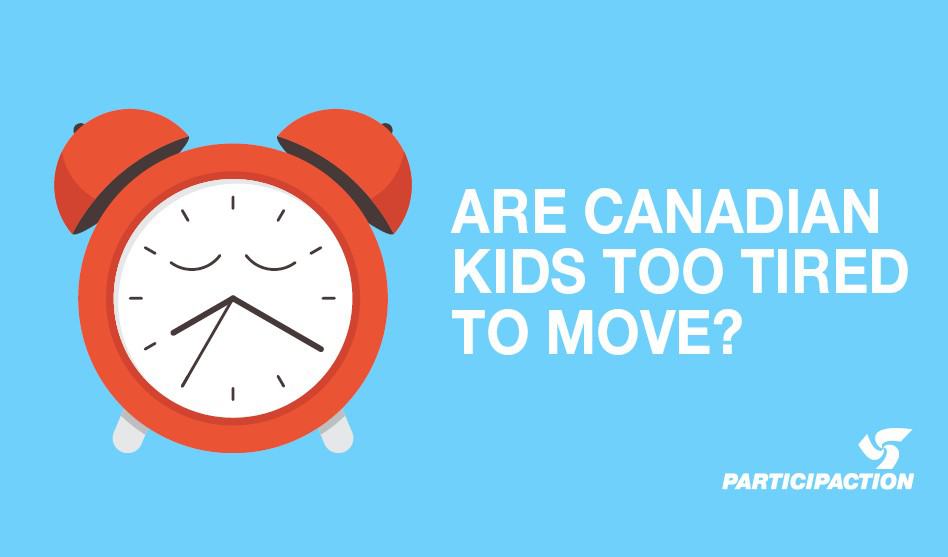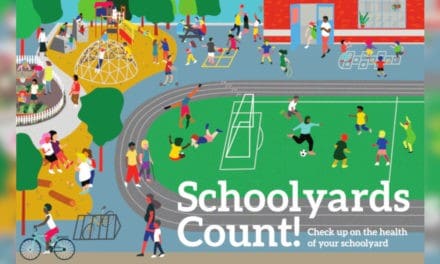TORONTO (ONTARIO) June 16, 2016 – If you think kids can get a little physical activity and then play video games into the wee hours, yet remain healthy, you’re in for a rude awakening. There are important relationships among sleep, physical activity and sedentary behaviour and new research shows that sedentary lifestyles are connected to a creeping ‘sleepidemic’ in Canadian children and youth. That is why, for the first time, the 2016 ParticipACTION Report Card on Physical Activity for Children and Youth assigns a grade to sleep and includes new Canadian 24-Hour Movement Guidelines for Children and Youth. A first of their kind in the world, the guidelines outline what a healthy 24-hour period looks like for children and youth.
“Sleep deprivation is becoming a problem for Canadian children and youth, creating an insidious threat to their mental and physical health,” says Dr. Mark Tremblay, Chief Scientific Officer, ParticipACTION Report Card and Director of the Children’s Hospital of Eastern Ontario Research Institute’s Healthy Active Living and Obesity Research Group (CHEO-HALO). “It’s time to take a whole day approach – many kids are too tired to get enough physical activity during the day, and not active enough to be tired at night – it’s a vicious cycle.”
For optimal health children and youth need to sweat, step, sleep and sit the right amounts. Only nine per cent of kids get enough heart-pumping physical activity and only 24 per cent are meeting screen time guidelines of no more than two hours per day. Plus, in recent decades, children’s nightly sleep duration has decreased by 30 minutes to an hour; 31 per cent of school-aged kids and 26 per cent of adolescents in Canada are sleep-deprived.
In addition to impacting children’s physical activity levels, sleep deprivation has many other health implications. For example, too little sleep can cause hyperactivity, lower IQ scores and produce adverse hormonal changes like those associated with increased risks of obesity, diabetes and hypertension.
The good news is that regular physical activity may just be the best sleep aid there is. According to the 2016 ParticipACTION Report Card, Grade 5 students with higher physical activity levels are less likely to be sleepy during the daytime and high school students who get at least 60 minutes of physical activity each day are 41 per cent more likely to get sufficient sleep than those who don’t.
“Our tendency may be to cram more into each day to wear kids out, but a full schedule of activities doesn’t necessarily equal more physical activity,” says Elio Antunes, President and CEO, ParticipACTION. “It’s time for a wake-up call. If we want to improve sleep in our kids, we need to get them off the couch and away from their screens with regular, heart-pumping activity.”
The Canadian 24 Hour Movement Guidelines for Children and Youth call for at least 60 minutes per day of moderate to vigorous physical activity, no more than two hours a day of recreational screen time, limited sitting for extended periods and at least 9-11 hours of sleep per night for children 5-13 years, and 8-10 hours for those aged 14-17 years. They were developed by the Canadian Society for Exercise Physiology, the Conference Board of Canada, HALO-CHEO, ParticipACTION and the Public Health Agency of Canada, with input from research experts and stakeholders across Canada and around the world.
The Report Card assigns grades in 12 categories this year, with Sedentary Behaviour receiving the lowest mark:
- “D-“ for Overall Physical Activity
- “F” for Sedentary Behaviour
- “D” for Active Transportation
- “D+” for Active Play
- “D+” for Physical Literacy
- “C+” for Family and Peers
- “C+” for School
- “B” for Organized Sport and Physical Activity Participation
- “B” for Sleep
- “B-“ for Government
- “A-“ for Community and Environment
- “A-“ for Non-Government
To download the 2016 ParticipACTION Report Card Highlight Report, including the Canadian 24-Hour Movement Guidelines for Children and Youth, or the full 76-page Report, please visit www.participaction.com/reportcard.
About the Report Card
The ParticipACTION Report Card on Physical Activity for Children and Youth is the most comprehensive assessment of child and youth physical activity in Canada. The Report Card synthesizes data from multiple sources, including the best available peer-reviewed research, to assign evidence-informed grades across 12 indicators. ParticipACTION relies on its strategic partner, The Children’s Hospital of Eastern Ontario Research Institute’s Healthy Active Living and Obesity Research Group (CHEO-HALO), to research, develop and communicate the Report Card. Production of the ParticipACTION Report Card has been made possible through financial support from RBC, The Lawson Foundation, IA Clarington Investments and provincial and territorial governments through the Interprovincial Sport and Recreation Council (ISRC).
About ParticipACTION
ParticipACTION is a national non-profit organization that helps Canadians sit less and move more. Originally established in 1971, ParticipACTION works with its partners, which include sport, physical activity, recreation organizations, government and corporate sponsors, to make physical activity a vital part of everyday life. ParticipACTION is generously supported by the Government of Canada. For more information, please visit www.participACTION.com.
-30-
For more information or copies of the ParticipACTION Report Card, or to schedule an interview, please contact:
Meaghan Beech
Hill+Knowlton Strategies
W: 416-413-4650
M: 416-463-4467
Meaghan.beech@hkstrategies.ca
Katherine Janson
ParticipACTION
W: 416-913-1471
M: 647-717-8674
KJanson@participACTION.com





